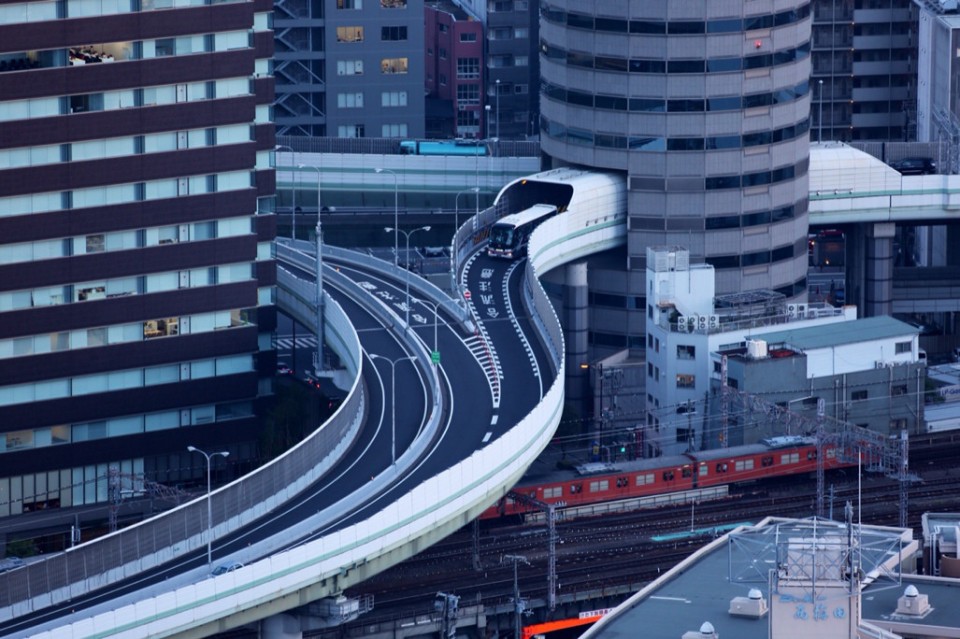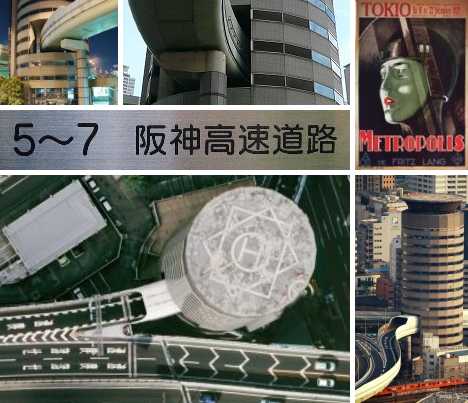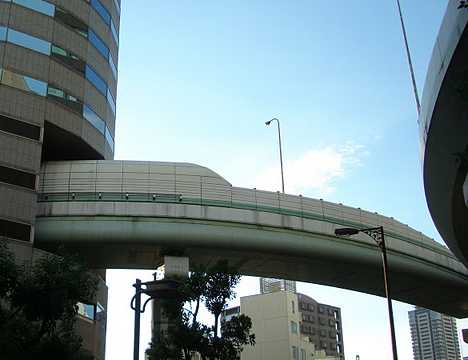What happens when an irresistible force (the Hanshin Expressway) meets an immovable object (stubborn landowners)? You get the Gate Tower Building in Osaka, Japan, a hybrid highway-cum-skyscraper that revamps the exit ramp and redefines telecommuting with a dash of “Lost in Translation.”
”It’s My Way or the Highway”
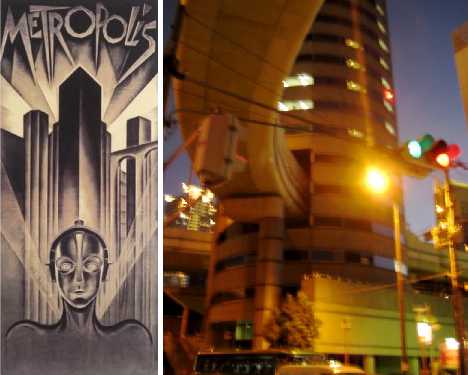 (images via: PopArt UK and MoriMori1028)
(images via: PopArt UK and MoriMori1028)
It’s an office building, it’s a highway ramp, it’s… well, the Gate Tower Building is a little bit of both. The Osaka, Japan landmark sometimes called “The Beehive” looks like some future extrapolation of supersaturated city life but in actuality the building/highway combo was opened nearly 20 years ago in February of 1992. The process which led to this curious urban hybrid dates back almost a decade earlier, to 1983.
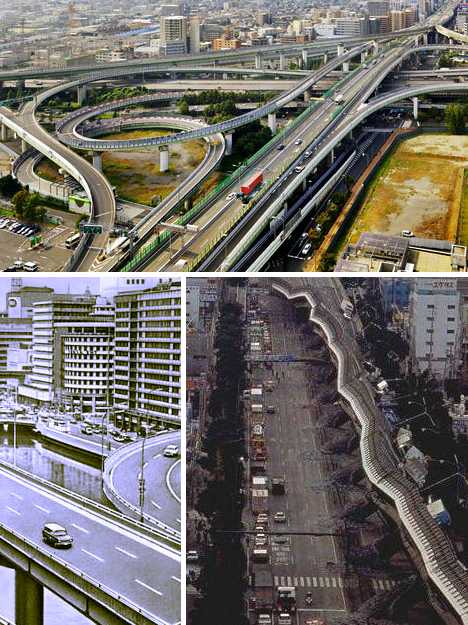 (images via: Saigon Ocean and University of Washington)
(images via: Saigon Ocean and University of Washington)
The Eighties were good times in Japan. Explosive growth in exports led by cars and consumer electronics left the government flush with funds to spend, and the preferred venue for spending was urban construction projects.
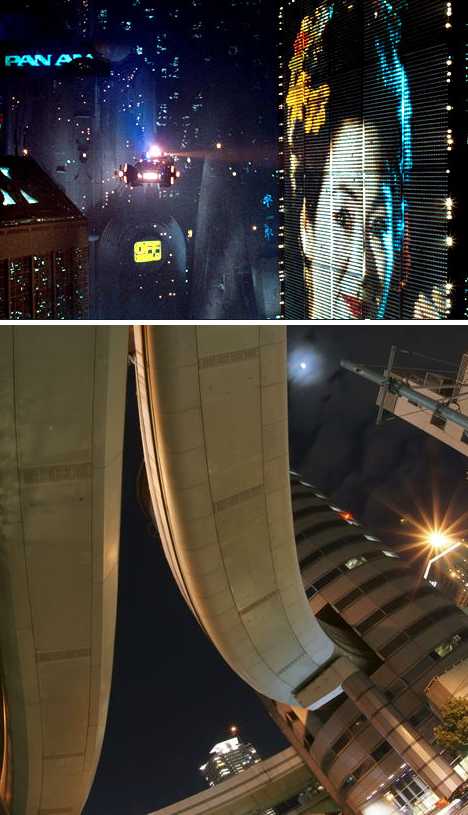 (images via: Bladerunner Wikia and Best Pictures Of)
(images via: Bladerunner Wikia and Best Pictures Of)
One such project involved the addition of several entry and exit ramps to the Hanshin Expressway, which itself opened in 1962 and has been branching out to serve the Osaka area’s growing population ever since. Though some sections of the Hanshin Expressway were severely damaged in the 1995 Great Hanshin Earthquake, the Gate Tower Building was unaffected.
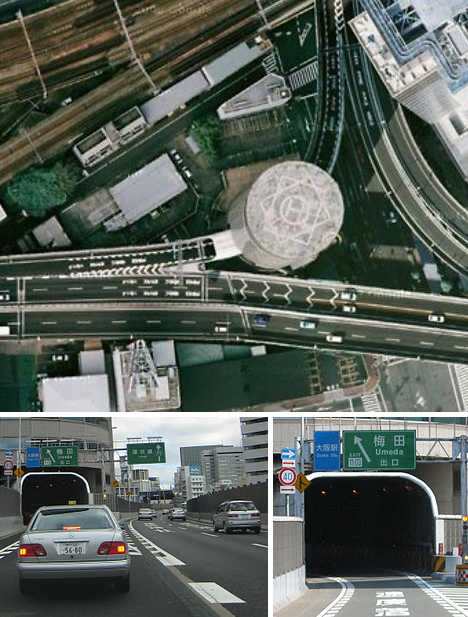 (images via: i8 News)
(images via: i8 News)
The ink on the blueprints wasn’t yet dry when a problem surfaced: the small yet crucial slice of downtown land destined to support the Umeda exit ramp was owned (since the 1870s) by a moribund lumber & charcoal firm, and the owners weren’t interested in selling the valuable property rights. Since there was no room to shift the exit ramp, the two sides sat down and began to negotiate… and negotiate… and negotiate some more. Five years later, the issue was finally resolved though neither side really conceded anything.
Making Inroads
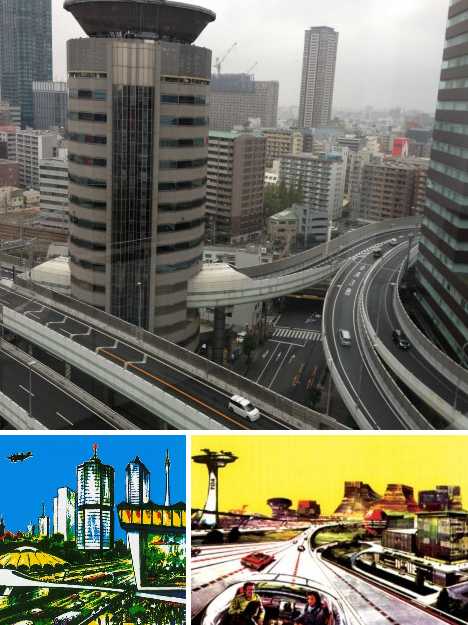 (images via: Rocketnews24, Voodo Vault and Amazon.com)
(images via: Rocketnews24, Voodo Vault and Amazon.com)
In 1988, the charcoal company’s last few mouldering buildings had been demolished and the property rights holders’ plans for a new, modern office tower had finally been approved by the Osaka city planning commission.
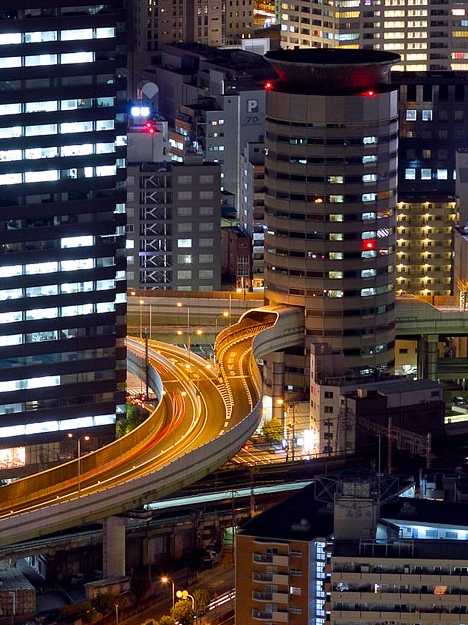 (image via: Osaka At Night)
(image via: Osaka At Night)
Building permits previously rejected due to the need to construct the highway ramp got the go-ahead, and construction on the ramp itself began. Both projects had to proceed in sync since both projects would be proceeding on the same plot of land.
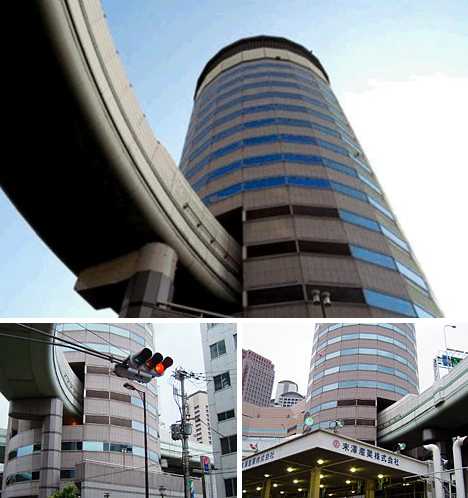 (images via: GreatEnjoy and Arc Style)
(images via: GreatEnjoy and Arc Style)
And so the Gate Tower Building was born, though on first glance the structure appears not quite whole… in other words, it has a hole: right where floors 5, 6 and 7 should be. It’s unknown whether the original building plans called for the 16-story tower that opened in 1992 or a 13-story building unmarred by the highway ramp but that’s all irrelevant now.
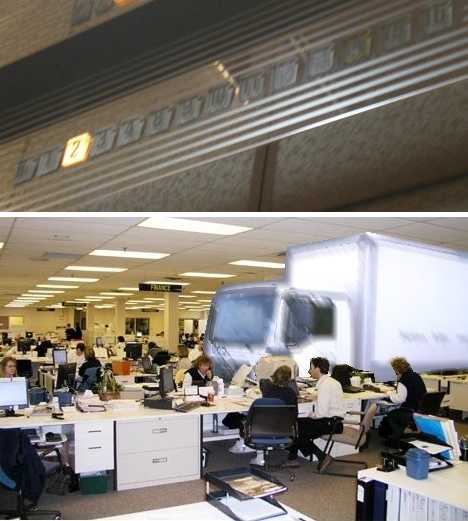 (images via: Rocketnews24 and An Englishman in Osaka)
(images via: Rocketnews24 and An Englishman in Osaka)
Workers in the Gate Tower Building don’t really notice the Umeda exit ramp as they toil away at the desks, with the possible exception of a slightly longer elevator ride up or down.
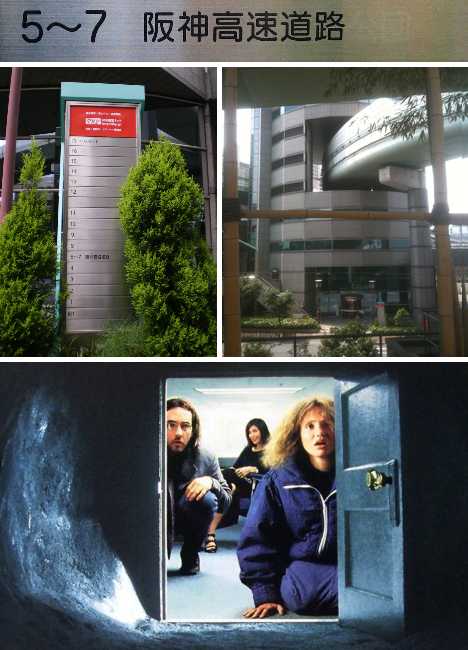 (images via: Ichiro’s Blog, Rocketnews24, Satoma1001 and No Pun Intended)
(images via: Ichiro’s Blog, Rocketnews24, Satoma1001 and No Pun Intended)
The elevators are mounted on the tower’s exterior for practical reasons and the cars (both elevator and vehicular) bypass floors 5 through 7. The nameplates for the omitted floors reads simply “Hanshin Expressway”. Surreal perhaps, but unarguably true nonetheless… and really, you don’t want to get off on one of those floors anyways, amiright?
Office Life in the Fast Lane
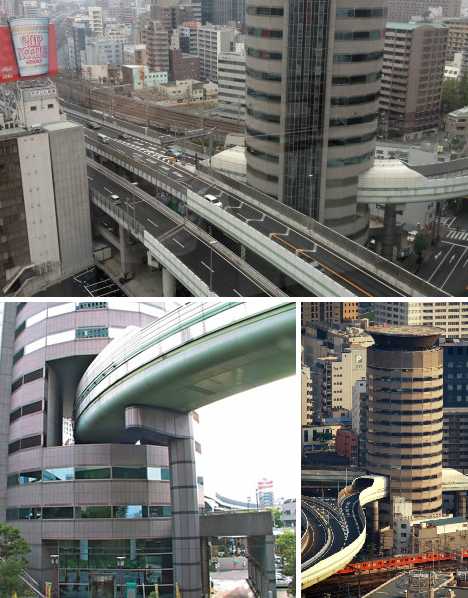 (images via: i8 News, Rocketnews24, Miyabi Group and Nigorobuna)
(images via: i8 News, Rocketnews24, Miyabi Group and Nigorobuna)
Suezawa Sangyo Co. Ltd. (the building owners) weren’t the only party to make some small compromises to accommodate the Umeda ramp. The Hanshin Expressway Corporation was required to insulate the building from noise and vibration, a feat that was accomplished in several ways.
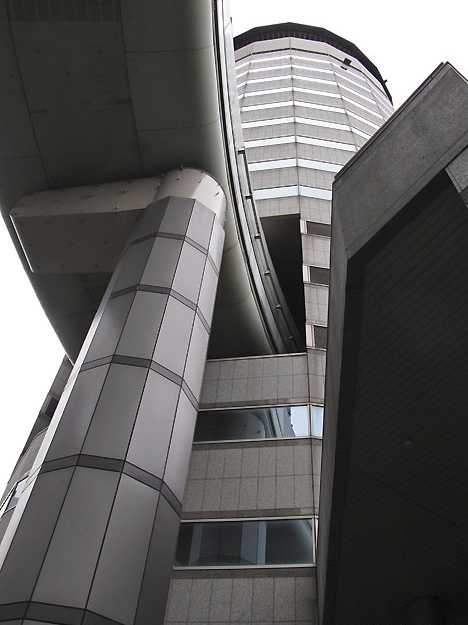 (image via: Ham-Ham)
(image via: Ham-Ham)
For one thing, the ramp is self-supporting and is designed as a bridge with its weight resting upon pillars. It’s interesting to note the pillars nearest the building (above) nicely complement the tower’s faceted facade. Secondly, the ramp’s “dogleg” bend and about a dozen meters of ramp on either side of the building are wrapped in a sort of “muffler” that, well, muffles the sounds of vehicles.
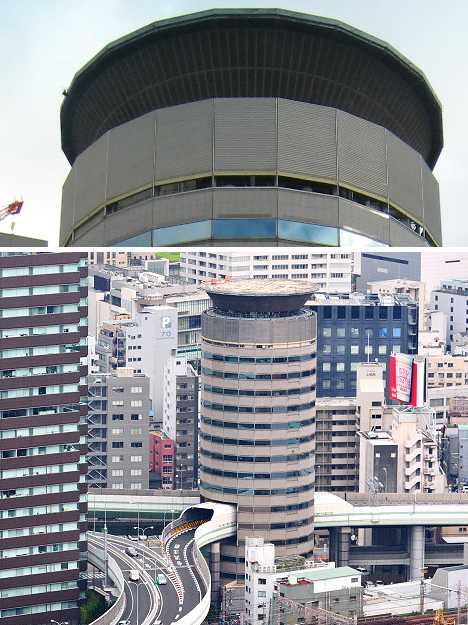 (images via: FooNar/Panoramio and Muza-chan)
(images via: FooNar/Panoramio and Muza-chan)
Wonders of 1980s construction aside, we can assume that workers on the Gate Tower Building’s 4th and 8th floors may note the odd shake, rattle & roll once in a while – and they know better than to chalk it up to just another minor earthquake. Those ensconced up on the 16th floor should hardly feel smug, however, as the building features a helipad on its roof.
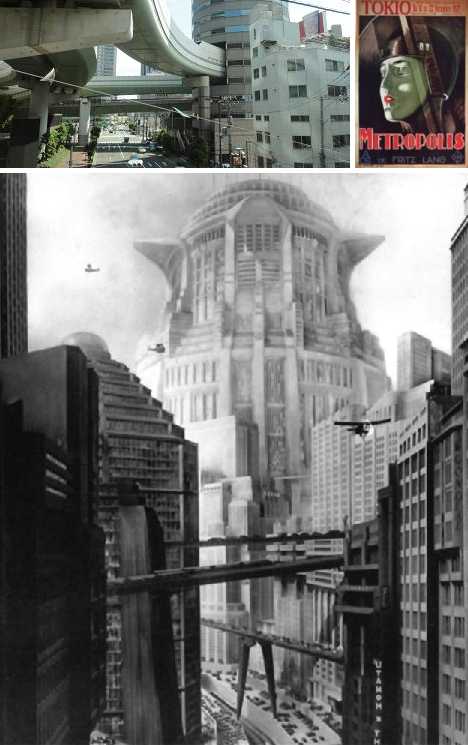 (images via: XWGPY960, PopArt UK and David S Zondy)
(images via: XWGPY960, PopArt UK and David S Zondy)
The Gate Tower Building is a shining example of Japan’s urban engineering skills, determination to solve potentially intractable problems and above all, desire to reach consensus regardless of the time and trouble required to do so. As for the Gate Tower Building itself, it may look super-cool and be a nice place to visit… but would you really want to work there?
